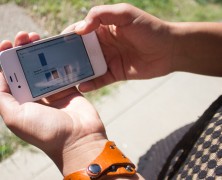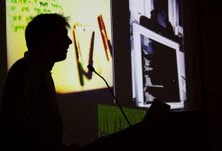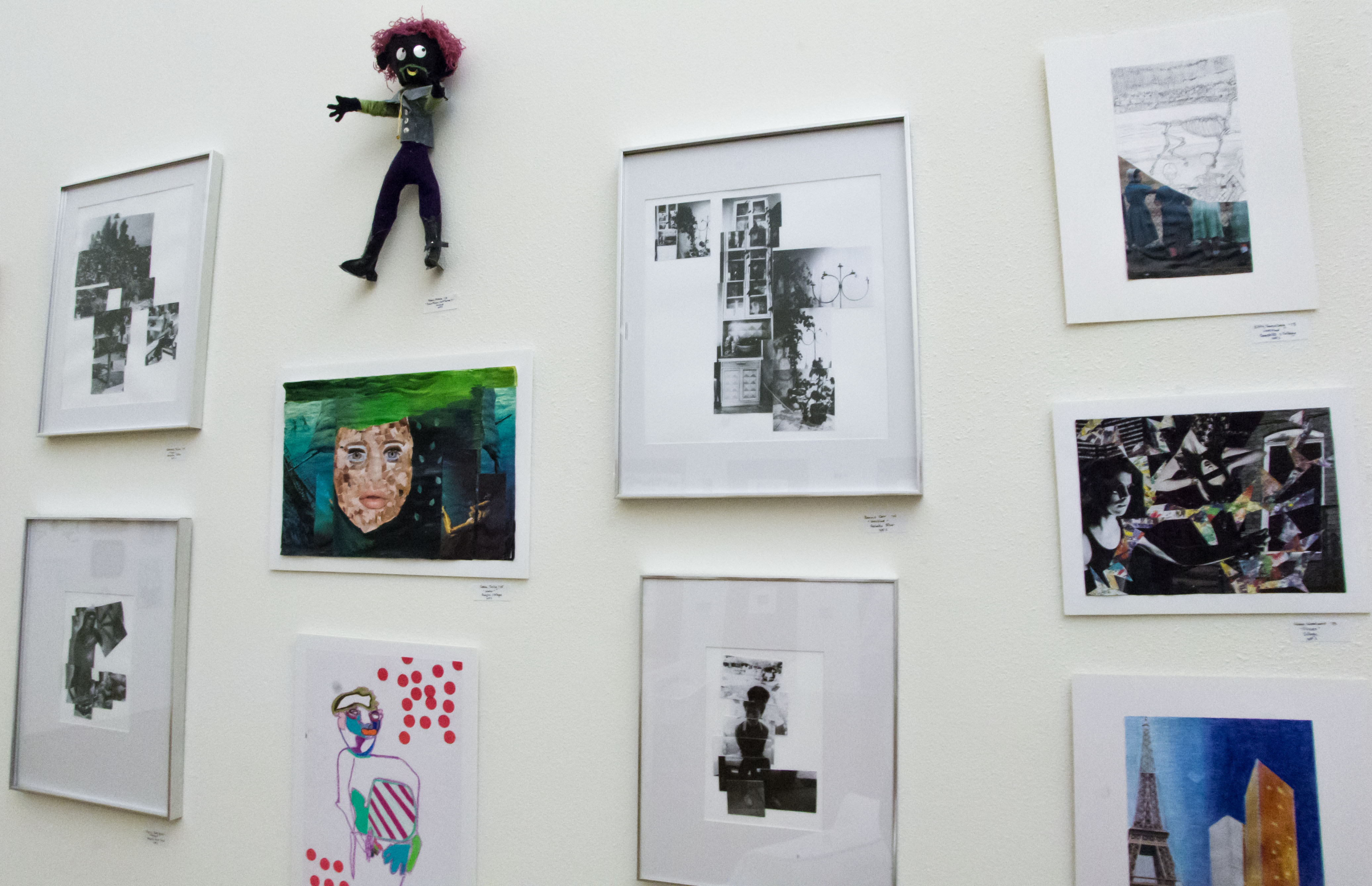Hannah Gardner, a studio art major at Santa Fe University of Art and Design, takes a break behind the Marion Center from the demands of her senior year as she enjoys the end of Santa Fe summer weather. Photo by Jennifer...
Picture This
posted by Arianna Sullivan
“Plain text,” says GigaOM Editorial Producer Rani Molla, “is just not how we think and learn anymore. We don’t memorize—we search. It’s just more efficient.” There are many ways to share and receive information, and Molla works in the visual realm of storytelling. Molla’s jobs range from helping co-workers post and arrange photos, to writing about design and how to access information visually, to creating data visualizations that help make statistics more reader-friendly and accessible. “From a photograph,” explains Molla, “we can infer an entire story.” Molla finds ways to visually represent information so that it is as interesting and engaging as a photograph. By showing statistics in chart, graph or diagram form, she makes data more approachable. It is often faster and easier to take information in visually than to sit down in front of a block of text that explains data through writing. Writing is still absolutely important—it provides analysis for the visual information—but having a comprehensible representation of the hard facts being analyzed can only benefit a written story. “Nobody can argue with numbers,” says Molla, “they’re objective—so if you can tell the story behind the numbers in a comprehensible way… that’s so exciting!” Diagrams and charts—especially when made interactive—can also make information more personally applicable to a viewer. If readers hover their mouses over a map to receive place-specific statistics, the numbers might carry more weight than if they just hear a national average. The interactivity of maps and charts is another way for people to easily engage with news and information. Still, even numbers can be presented in un-objective ways. Telling stories through charts and graphs is, like all narrative, about perspective. One study, published in The Washington Post, shows a notable increase in Netflix usage in the United...
Alumni Profile
posted by Arianna Sullivan
“As far as the Internet is concerned,” says Cordillera Productions Executive Director Jason Jaacks, “we are dealing with a Model T. There’s no V-8 here, And two weeks ago, we were like the Flinstones.” The Internet is still young in its development, but changing quickly. As it continues to grow and evolve as the leading tool for information sharing, documentarians like Jaacks are looking for ways to adapt storytelling to the Internet. Jaacks shared these thoughts in a lecture, “Documentary Without Borders: The Future of Storytelling in the Internet Age” on campus Oct. 3. According to Alenty, an Internet rating company, the average viewing time for a single web page is 33 seconds. Jaacks, a second-year student at the Berkeley School of Journalism and a 2009 graduate of the College of Santa Fe’s documentary studies program, is exploring storytelling techniques to engage viewers with attention spans shaped by the web. In order to create narratives that can hold an Internet user’s attention, Jaacks is experimenting with telling visual stories that have multiple narrative arcs and points of entry and that are interactive for the viewer—essentially interactive online movies. Jaacks cites Hollow as an example and source of inspiration for multimedia visual documentaries. The ‘movie’ explores the stories of more than 30 residents of McDowell County, W. Va. Online, Hollow consists of several visual timelines, made up of still and moving images, which can be scrolled through at the viewer’s leisure. Along the way are links to the detailed narratives of the stories featured on the timeline. The first time that Jaacks visited Hollow’s website, he spent two hours on it, putting the 33 second average viewing time to shame. Jaacks began telling stories through several mediums with his senior thesis as a student at CSF. His...
Monte Del Sol student work on display at SFUAD...
posted by Arianna Sullivan
By Arianna Sullivan/Photos by Natalie Abel The Marion Center is alive with a plethora of energy when I enter. A group of Monte del Sol Charter School students grouped in the corner of the main gallery sing energetically, accompanied by an electric keyboard. The walls are filled, seemingly top to bottom, with an eclectic mix of different mediums—from photography to 3-D dolls—all a product of the spirited Monte del Sol art department, and the efforts of its two key players: Michael Webb and Nancy Sue Michels. The place is absolutely swarming with middle and high school students, Santa Fe University students and faculty, parents of the Monte del Sol students, and even Santa Feans who came to the Marion Center to view the two other shows opening in the space, and then wandered into the charter school’s show with pleasantly surprised looks on their faces. When Natalie and I finally track down Michael and Nancy Sue, they are both buoyant and enthusiastic about the show, and the turn-out for its opening. “This might be the best show we’ve ever had,” they agree, referring to the success of the Marion Center as a space to showcase their students’ work after 13 years of working together to put up an annual show of the student work being created in Monte’s art department. Nancy Sue is excited, she explains, by the energy that is constantly buzzing about the Marion Center Gallery. “Even when we were hanging the show the other day,” she says, “there were people coming through here, going about their business. It’s not like a gallery space that closes up at night and after that nobody sees the artwork. Plus,” she concedes with an almost mischievous smile, “it gives me this little flashback to being...






 Jackalope Magazine is the student magazine of Santa Fe University of Art and Design. Building on the interdisciplinary nature of our education, we aim to showcase the talent of our university and character of our city.
Jackalope Magazine is the student magazine of Santa Fe University of Art and Design. Building on the interdisciplinary nature of our education, we aim to showcase the talent of our university and character of our city.
Recent Comments